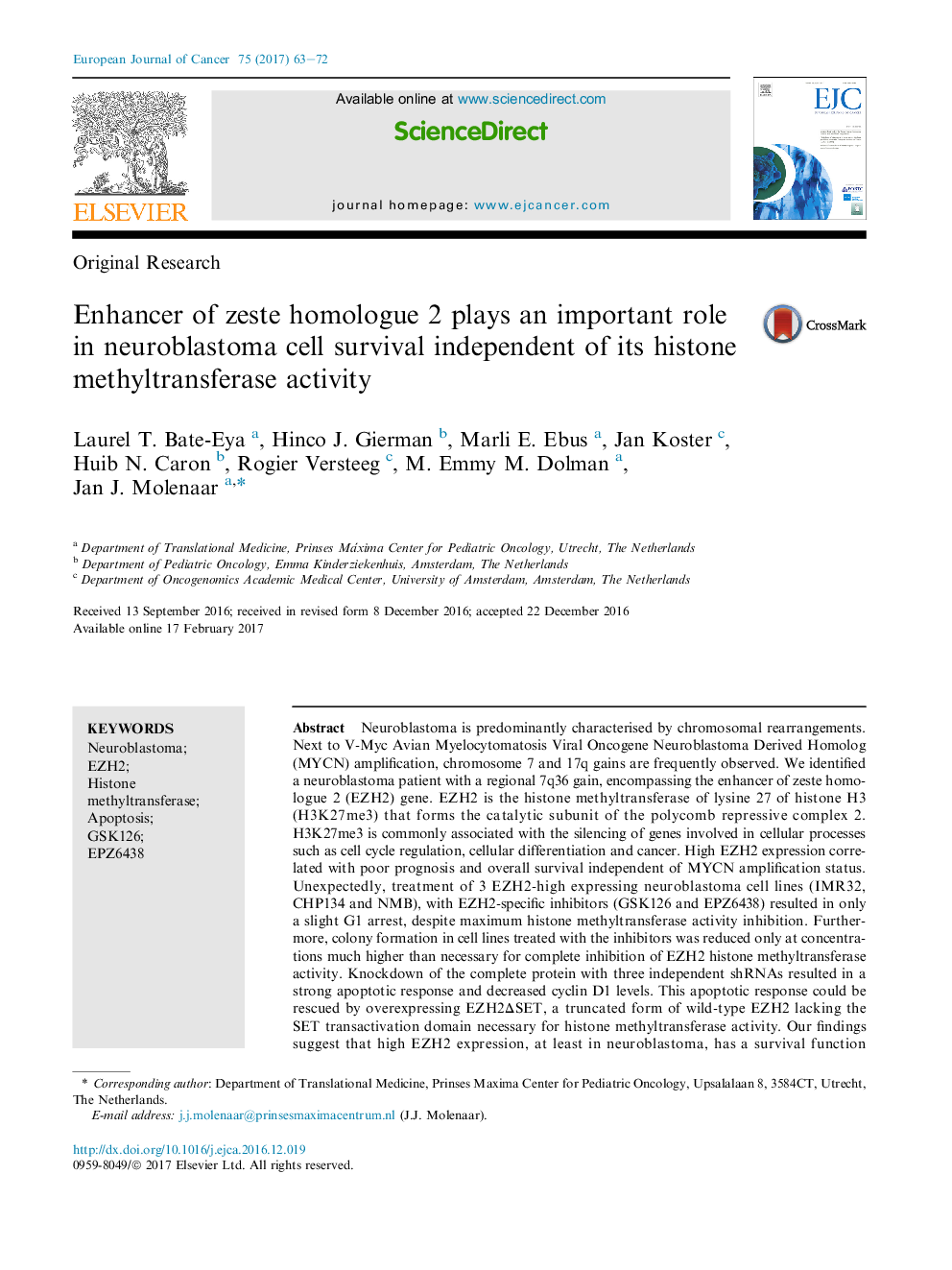| کد مقاله | کد نشریه | سال انتشار | مقاله انگلیسی | نسخه تمام متن |
|---|---|---|---|---|
| 5526260 | 1547057 | 2017 | 10 صفحه PDF | دانلود رایگان |

- Identification of a neuroblastoma patient with local gain of 7q36 region harbouring the enhancer of zeste homologue 2 (EZH2) locus.
- EZH2 overexpression correlates to chromosome 7 gain and relates to poor prognosis and patient survival.
- Treatment of EZH2-high expressing neuroblastoma cell lines with EZH2-specific histone methyltransferase inhibitors results only in slight G1 arrest.
- Knockdown of complete protein causes strong apoptotic phenotype.
- Overexpression of EZH2ÎSET rescues the apoptotic phenotype.
Neuroblastoma is predominantly characterised by chromosomal rearrangements. Next to V-Myc Avian Myelocytomatosis Viral Oncogene Neuroblastoma Derived Homolog (MYCN) amplification, chromosome 7 and 17q gains are frequently observed. We identified a neuroblastoma patient with a regional 7q36 gain, encompassing the enhancer of zeste homologue 2 (EZH2) gene. EZH2 is the histone methyltransferase of lysine 27 of histone H3 (H3K27me3) that forms the catalytic subunit of the polycomb repressive complex 2. H3K27me3 is commonly associated with the silencing of genes involved in cellular processes such as cell cycle regulation, cellular differentiation and cancer. High EZH2 expression correlated with poor prognosis and overall survival independent of MYCN amplification status. Unexpectedly, treatment of 3 EZH2-high expressing neuroblastoma cell lines (IMR32, CHP134 and NMB), with EZH2-specific inhibitors (GSK126 and EPZ6438) resulted in only a slight G1 arrest, despite maximum histone methyltransferase activity inhibition. Furthermore, colony formation in cell lines treated with the inhibitors was reduced only at concentrations much higher than necessary for complete inhibition of EZH2 histone methyltransferase activity. Knockdown of the complete protein with three independent shRNAs resulted in a strong apoptotic response and decreased cyclin D1 levels. This apoptotic response could be rescued by overexpressing EZH2ÎSET, a truncated form of wild-type EZH2 lacking the SET transactivation domain necessary for histone methyltransferase activity. Our findings suggest that high EZH2 expression, at least in neuroblastoma, has a survival function independent of its methyltransferase activity. This important finding highlights the need for studies on EZH2 beyond its methyltransferase function and the requirement for compounds that will target EZH2 as a complete protein.
Journal: European Journal of Cancer - Volume 75, April 2017, Pages 63-72